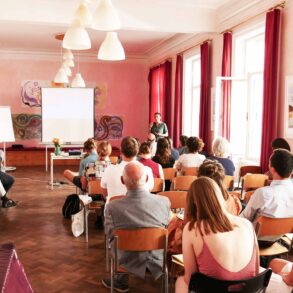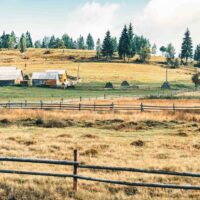Oskar Schmiedel (1887–1959) was the first to conduct research on Rudolf Steiner’s family. He personally visited descendants of the Blie and Steiner families and received photos from them – the portraits depicted here come from his collection (now the Goetheanum Archive).
Rudolf Steiner’s ancestors – as far as they can be traced back – lived in a manageable geographical radius: in the Waldviertel (northeastern Austria) and in neighboring Moravia. All were craftsmen: farmers, millers, hunters, foresters, weavers, whitewashers, gingerbread bakers. Due to his father’s profession, however, Rudolf Steiner grew up far away from this area – and thus probably only got to know a few of his relatives in his childhood.
Whoever he met personally from his numerous aunts, uncles, and cousins, as far as it can be inferred from various documents, will be introduced below. In any case, his grandparents were not among them: both grandfathers had died many years before he was born; his maternal grandmother died in the poorhouse when he was one year old. The date and place of death of his paternal grandmother are still unknown.
His father’s family
Rudolf Steiner’s father, Johann Baptist Steiner (Trabenreith, June 23, 1829–January 22, 1910, Horn) – who was probably named after John the Baptist, as he was born in the Johanni period – was the son of Johann Michael Steiner (†1849) and his wife Anna Maria Poigner (*1797–after 1841). While the ancestors of this grandmother, who comes from a family of farmers, can be traced back a long way, Rudolf Steiner’s grandfather has strange circumstances: In the wedding entry of his grandparents from February 24, 1824, as usual, the parents of the bride and groom were listed in the baptismal records of Trabenreith. There, the «forester and Perneggerian innkeeper» Johann Michael Steiner says that he was Johann Steiner’s, «binding master[Tüncher] from Nexing» and Juliana, born Wingler’s, «son born in wedlock» und 46 years of age. So he would have to be born in 1777 or 1778. Now, there is actually a Johann Michael Steiner with the mentioned parents in the baptismal records of Nexing – but he was born on April 30, 1787. One can assume that there was a clerical error in the baptismal records – and it would have to be: 36 years, then it would match with the information.
But even if this were the case, there are other mysteries: because the mother, Juliana Steiner-Wingler, died during «childbirth» – and the child died on October 20, 1787.1

The widowed father, Johann Steiner (1752–1812), who had lost his wife and child in the same year, married twice more afterward. A further 13 children were born to him – including a boy on 7 August 1806, who was again given the name Johann Michael. 2 So what is going on with Johann Michael Steiner, the family name giver? His origin is shrouded in mystery and his birth year is uncertain. But at least his date of death is certain: He died of jaundice on August 10, 1849, in Geras as a «k. k. district huntsman of Geras Abbey», and was provided with the «Holy Sacraments of Death». His age here is indicated – not consistent with the indication in the baptismal records – as 64 years, according to which he should have been born in 1784 or 1785.
Like his two older siblings Edmund (1825–1885) and Theresie (1827–1828), Johann Baptist, Rudolf Steiner’s father, was born in Trabenreith. Then the family moved to Geras, where the other siblings Anton (1832–1907),3Franz Xaver (1833–1907), Anna (*1836), and Maria Steiner (*1841) were born. Edmund, Franz Xaver, Anton, and initially also Johann Baptist all chose their father’s profession and became hunters and/or foresters!

Whether Rudolf Steiner ever met relatives of his father’s side is questionable. There is no evidence of this, only some deaths are mentioned in his father’s letters: «As far as my mother and siblings are concerned, we are healthy and hope the same for you; However, last month we had a death in the family. My brother Anton died, he was as you know, a forester in Walkenstein and was 74 years old; otherwise no changes.» (Sept. 21, 1907) And in a letter from December 6, 1907 it says: «We want to give you some news about our relatives. My brother Anton the forester in Walkenstein Geras Abbey, as well as my younger brother Franz, who was also in the Abbey Geras, died a few weeks ago.»
His mother’s family
For various reasons, there were more intimate contacts with the members of the maternal family.
Franziska Blie came «from an old Horn family» (GA 28, p. 8), whose name is sometimes also listed as «Blüh» in the records. Her father Joseph Blie (1796–1848) came from a large family from Weitersfeld (Horn district) and, like his father and grandfather, was a canvas weaver and canvas dealer. Carlo Septimus Picht wrote in 1931 in his article ‹Aus der Schulzeit Rudolf Steiners› (From Rudolf Steiner’s school days): «According to a personal statement by Rudolf Steiner, his mother had Slavic blood.»4 This is confirmed in the family tree: Franziska Blies paternal grandmother – Anna Maria Bauer – came from Moravia. Her mother, Maria Anna Schellerl (1795–1862), came from a family of millers from Oberhöflein (Horn district). She died as a «poor beneficiary», i.e. in a poor house, because the family was in need at the time – the old trade was no longer profitable, and so the two brothers had to work as day laborers for a while.
Joseph and Maria Anna Blie had five children: Juliana (*1820–after 1901), Franz (1821–1901), Joseph (1823–1895), Anna Maria (*1824), and, as a latecomer, Franziska (1834–1918).5 The eldest sister, Juliana, married Josef Szedlatsik (*1821) from Mengsdorf in northern Slovakia in 1853 – shortly after the birth of their daughter Marie. Josef Szedlatsik’s profession was registered as ‹innkeeper› – i.e. he ran an inn or hostel. The couple got married in Lichtental near Vienna, and they probably lived in the Vienna area for the next decades.
It can therefore be assumed that Rudolf Steiner got to know these relatives as a child or adolescent. When he traveled to Austria with his wife Anna in 1901, he entered in his travel diary – which was published in the last archive magazine of the Rudolf Steiner Archive – under the date August 18, 1901: «Visit Aunt Szedladzik.»6
He also had a relationship with their daughter Marie (June 30, 1853–after 1922) – called Mizzi or Mitzl in Viennese. Together with Rudolf Steiner’s sister Leopoldine, she attended his lecture on February 20, 1893, on ‹Uniform conception of nature and the limits of knowledge›. This emerges from a message from Rudolf Steiner dated February 18, 1893, to his parents and siblings: «I do not have official cards, but I ask Poldi and Mitzl to come along with these business cards and to refer to me respectively in case of questions.»7 And on December 26, 1908, Johann Steiner wrote: «Szedlacik Mizzi from Vienna wrote to us that it was such a great pleasure to see you, but you did not visit her. Have you been to Vienna again, or does she mean the journey (Sept. 08), where you leave us via Vienna to go to Italy, – if you should come back to Vienna, and your time allows it at all, go visit her for a few minutes, because as she writes it offends her when one of us is in Vienna and does not visit her, her apartment is still the same so far.» Apparently, Rudolf Steiner and Marie also saw each other during the time of the Vienna West-East Congress in 1922, at least she wrote to him as «Your Cousin Marie» on June 14, 1922: «Dear Cousin Rudolf! Indescribable is my joy to have seen you again after so many years and to be able to welcome you. Dear cousin, you look wonderful, also your dear, dear wife, a beautiful, kind lady. You are always traveling and have a lot to do. As far as I am concerned, I am not well at all, I am not healthy and with the current situation of inflation, my earnings are not enough to be able to buy the most necessary things, it is a sad time. I would be very happy to hear from you every now and again.»8
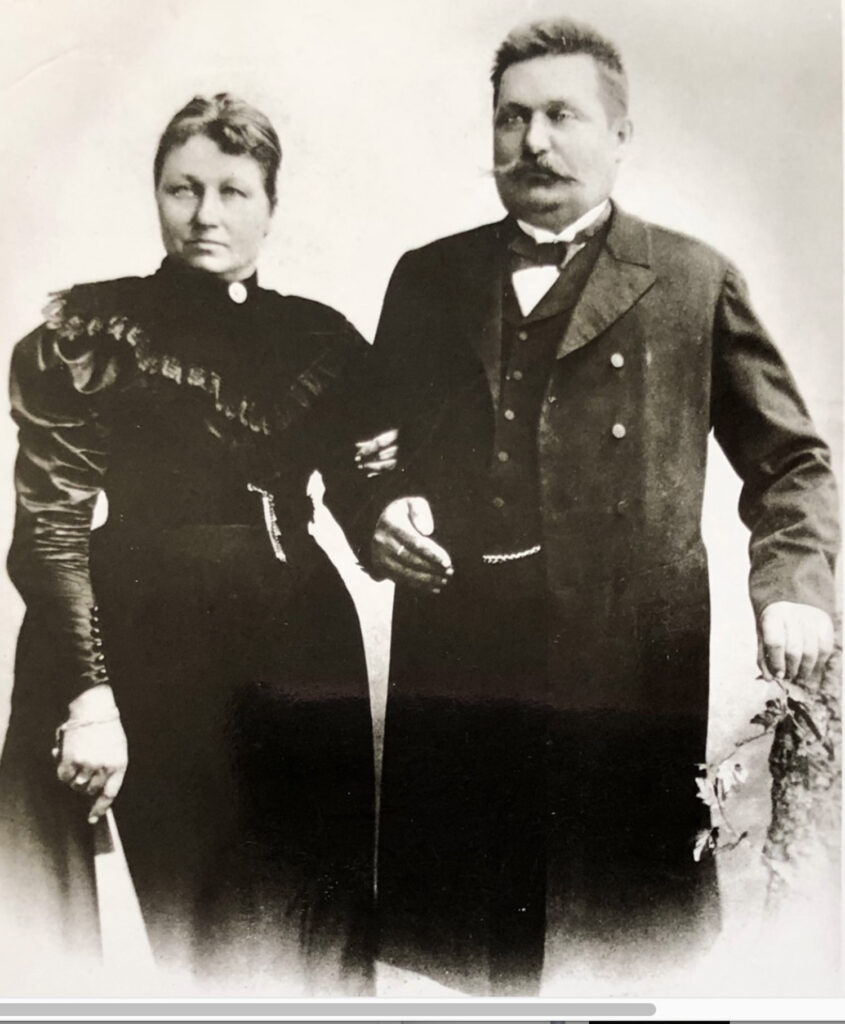
The brothers Franz and Joseph Blie were both initially wickers (basket makers); then, as mentioned above, they worked as day laborers for a while until they found new professions. Joseph Blie, who had married Anna Donhauser in 1846, founded an inn in 1866, which still exists today as Hotel Blie in Horn. Franz Blie, married to Maria Anna Veigl since 1853, later became a ‹mortician›, which means he prepared corpses for burial. After the death of his first wife, he married Francisca Barath, the widow of a gravedigger, in 1877. Rudolf Steiner may have met him when he visited Horn for the first time in November 1899, where his parents had moved with Leopoldine and Gustav after their father’s retirement. However, he knew Ignaz Blie (1851–1925) for sure, the son of Joseph Blie, who took over the inn from him and significantly expanded the company with a winter bowling alley, among other things. Rudolf Steiner met him in 1901 when he and his wife Anna visited his parents in Horn because under the date of August 16 it says: «With Ignaz Blie sandpits» 9 Johann Steiner reports the death of his 25-year-old son Franz to his son Rudolf on January 19, 1899: «The teacher Franz Blie, who I mentioned in the previous letter, unfortunately died. The funeral procession was on Dec. 26.»
First occult experience
Through a more in-depth investigation of Rudolf Steiner’s family environment, it is now also possible to clarify which family member it was exactly who appeared to him during his first occult experience as a boy: it can only be the second oldest sister of his mother, Anna Maria Büttner-Blie (*1824),10 because Rudolf Steiner visited his aunt Juliana in 1901. Anna Maria Blie gave birth to an illegitimate child in 1850, who died a few days later. In 1853 she married the «financial supervisor» Joseph Büttner (*1823) from Rochlitz in Bohemia. On March 22, 1853, their son Heinrich was born in Weitra.
It has not yet been possible to determine when she took her own life, because suicides were not recorded in the church registers at that time. From Rudolf Steiner’s stories, it can be assumed that the event took place shortly before his family moved from Pottschach to Neudörfl in January 1869, i.e. probably in the fall/winter of 1868. He writes about this in an autobiographical fragment: «The following experience made a deep impression on the boy. My mother’s sister had died tragically. The place where she lived was quite far from ours. My parents had not received any messages. Sitting in the waiting room of the station, I saw the whole event in my mind.»11 In the autobiographical lecture of February 4, 1913, he recounts in a little more detail: «The woman’s personality walked in the door, walked to the middle of the room, made gestures, and also spoke words that can be reported in the following way: ‹Try now and later, to do as much as you can›, so she said to the boy, ‹for me!› Then she was present for a while with gestures, which can no longer disappear from the soul when you have seen them, went to the oven and disappeared into the oven. […] In a place that was quite far from that train station for the way of thinking of the people in question, a very close family member had committed suicide in the same hour in which the figure had appeared to the little boy in the waiting room.» He knew «not much about the personality who had killed herself. The event made a great impression because there is no doubt that it was a visit of the spirit of the person who had suffered a self-inflicted death who had approached the boy to force him to do something for her in the nearest period after death.»12
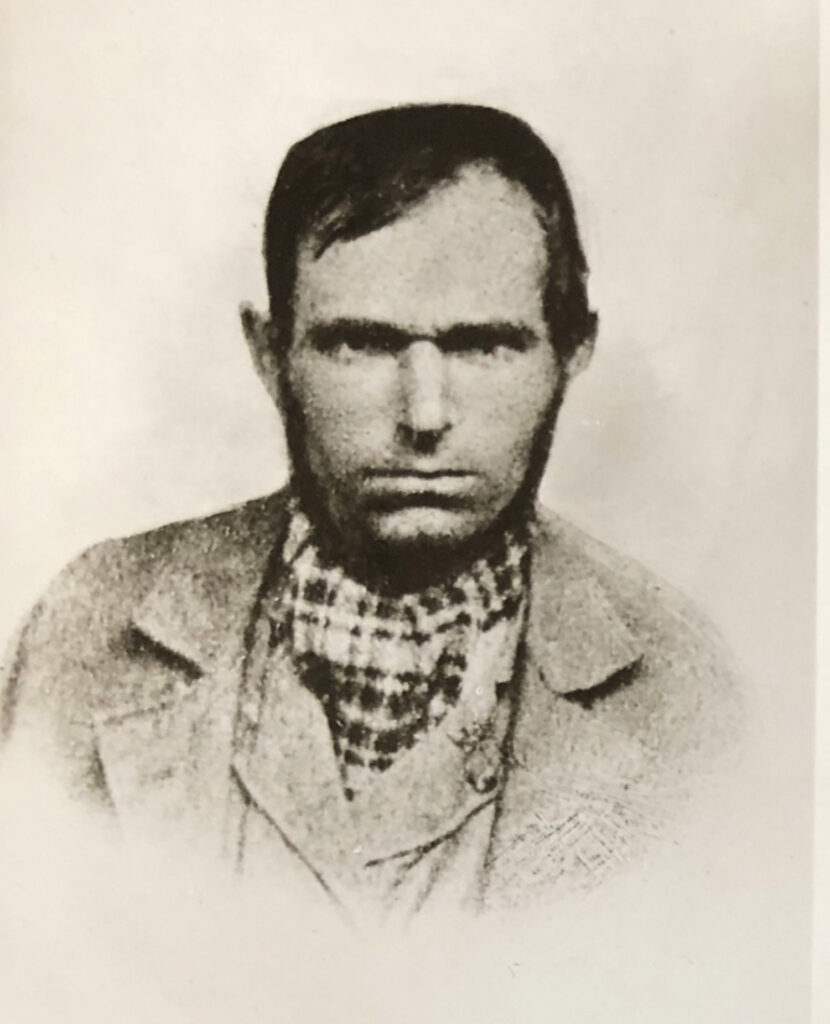
This experience was of great importance for the young Rudolf Steiner, because «from that event onwards, a life in the soul began for the boy, to which certainly those worlds were revealed, from which not only the outer trees, the outer mountains speak to the soul of man, but also those worlds that are behind them. And the boy lived from about that time with the spirits of nature, which are particularly observable in such an area, with the creative beings behind things, in the same way, that he let the outer world affect him.»13 From that moment on, he knew «how to live in spiritual worlds».14 And there must have been a significant relationship between this aunt and him that she turned to him after death, even though he had never even met her.
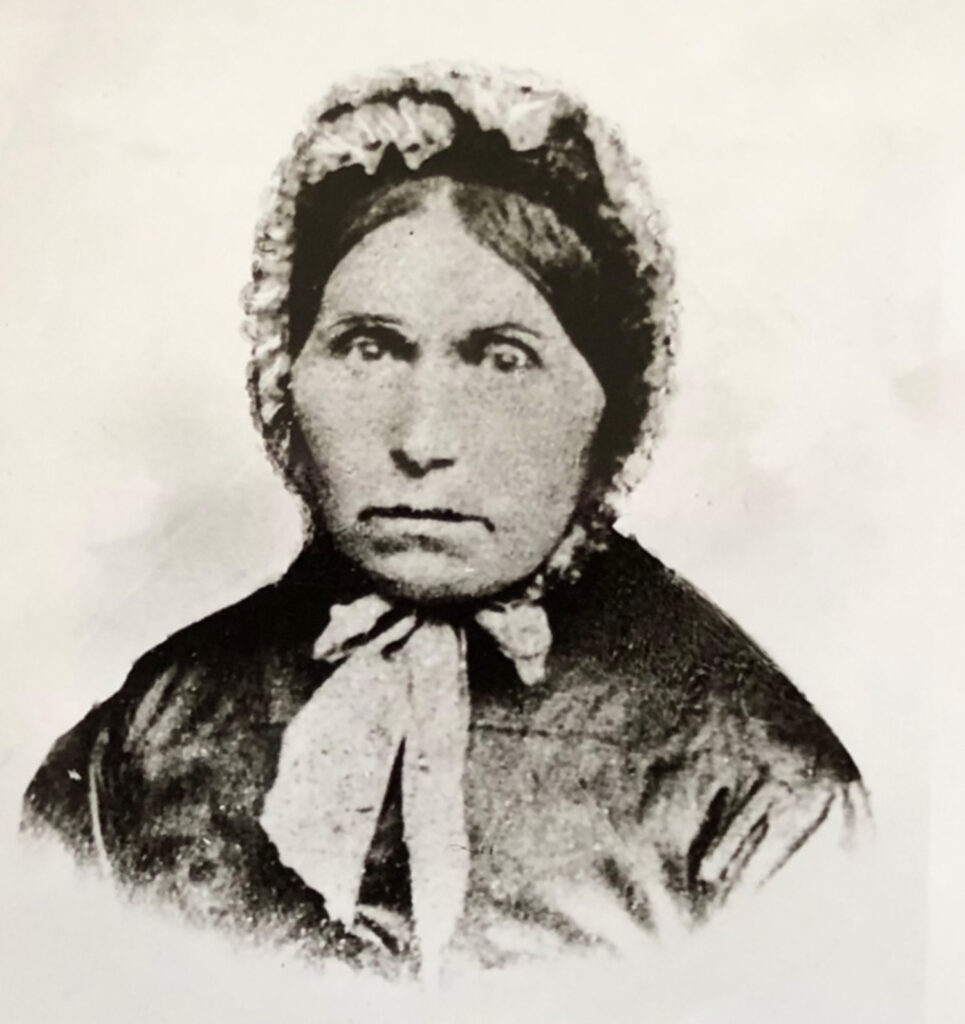
Now, Rudolf Steiner often talks about how important it is that as a child you can develop feelings of worship. He himself must have had several experiences in this regard – not only with revered personalities such as the railway doctor Carl Hickel and some teachers but also with a relative of whom the parents often spoke. As he recounts in the lecture of November 21, 1908: «If it has happened to you that in your early childhood, you hear talk about a family member who is very revered and if as a child you have also absorbed this feeling in yourself, and the day is approaching when you can see this person for the first time – if you then have a holy shyness, to use the handle of the door behind which the revered person is supposed to appear is also a very reverent feeling […].»15 In the essay on ‹The Education of the Child›, he even mentions a specific age: «An eight-year-old boy is spoken to about a particularly honorable personality. Everything he hears about her instills in him a holy shyness. The day is approaching when he can see the revered person for the first time. A trembling of awe afflicts him, as he presses the handle of the door behind which the revered one will appear …»16
If the boy Rudolf Steiner had this experience himself, who can be this family member? If one looks back at the relatives, only Anna Maria’s husband, Joseph Büttner, who went through a successful professional career – from financial supervisor to accounting official at the k. k. Tabak u. Stempel-Hofbuchhaltung in Vienna – comes to mind. It is possible that this rise was the reason why people in the family spoke of him admiringly – and since he lived in Vienna, it is also quite possible that Rudolf Steiner could have seen him there or in Neudörfl for the first time as an eight-year-old child.
The son of Anna Maria and Josef Büttner, Heinrich (1853–1946), pursued a similar career and even became chief customs inspector, government councilor, and member of the customs advisory board of the Ministry of Commerce; In 1908 he was awarded the Franz Joseph Medal. Rudolf Steiner often had contact with him – his Viennese address can occasionally be found in notebooks – as early as 1879 and until 1922, 17when he probably visited him when he was once again in his old hometown for the Congress of Vienna. On April 8, 1918, his sister Leopoldine wrote to him: «I can tell you something new that Heinrich Büttner’s wife died on April 3. I think, dear Rudolf, this might interest you because you knew her well.» The fact that Rudolf Steiner also «knew» Heinrich Büttner’s wife Antonia (1851–1918) «well» underlines his relationship with this family.
Does this loyalty in relation to Heinrich Büttner also have something to do with Rudolf Steiner’s special relationship with Anna Maria Büttner – and her deathly request to him to «do as much as you can for me now and later»?
All Pictures can be found in the Goetheanum-Archiv (Signatur GOE E.19.05.03.001.002).
Footnotes
- Although the child is only registered as «Michael Steiner» in the death records, he can be identified beyond a shadow of a doubt as Johann Michael Steiner by stating the parents and stating the age «1/2 year». At that time, it was often customary to give the next child the same name as the last one deceased, but since the mother had died at birth, this couldn’t have happened. And if the couple had had a son named «Johann Michael» prior to that, they would not have given another son this double name.
- But he has another mother, Johann Steiner’s third wife, Anna Maria Rechling.
- There are descendants of Anton Steiner to this day. In the summer of 2019, I was given a photo of one of them, which Johann Baptist had sent to his brother from Inzersdorf – i.e. between 1879 and 1882.
- Carlo Septimus Picht, ‹Aus der Schulzeit Rudolf Steiners› (From Rudolf Steiner’s school days). In: On Rudolf Steiner’s education, IV. Jg. 1930/31, p. 260.
- The two older sisters were therefore named after their grandmothers.
- Archivmagazin 10. Dornach 2020, p. 22 f.
- ga 39, p. 172.
- rsa 089.
- Archivmagazin 10. Dornach 2020, p. 22 f.
- In my book ‹Rudolf Steiner. Kindheit und Jugend› (Rudolf Steiner, Childhood and Youth) (Dornach 2018) I still assumed that this must be Juliana Blie, as there were no traces of her life at first.
- ga 46, p. 868 f.
- ga 250.
- ga 250, p. 626–628.
- Ibidem, p. 653.
- ga 108. Similarly in the lecture of Oct. 28, 1908, ga 58, where he speaks of an «outstanding personality» of whom «within the family […] all spoke with devotion and reverence.»
- ga 34, p. 330.
- See nb 484 und 122, rsa,






